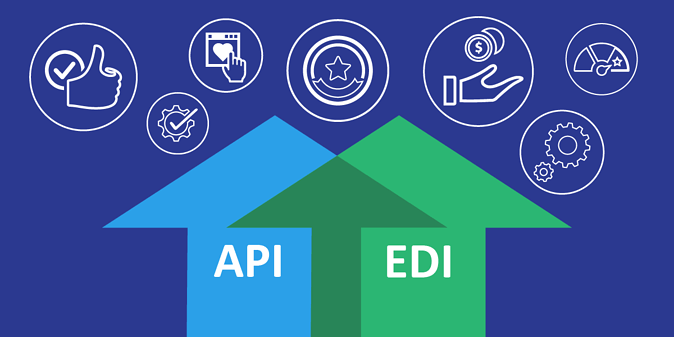Digital Transformation Is a Must
Digital transformation is on the minds of many senior business executives. They realize that digital transformation can no longer be discussed in the abstract; it must be a part of their business strategies and goals.
According to research firm Gartner, most CEOs understand the importance of digital business, and half of those surveyed expect to see digital transformation in their industries. The rise of the Internet of Things (IoT), blockchain, and autonomous transportation all played a role in their responses.
More immediately, mobile and omnichannel are necessary capabilities for moving ahead of the competition. Businesses are under an increasing demand to delight consumers with unique experiences, as well as providing employees and partners with immediate access to useful data. That can’t be done without integrating new systems and touchpoints with legacy systems and data stores. We’ll explore the importance of integration and APIs in this post.
IT and Digital Transformation
IT plays a critical role in digital transformation, and a majority of IT leaders surveyed are in the thick of it. According to the MuleSoft 2018 Connectivity Benchmark Report, (74%) of IT decision makers are currently carrying out digital transformation initiatives, with a further 23% planning to over the next three years. Among the top initiatives are:
- Improving how efficiently their IT operations work
- Transforming their customers’ experiences and interactions
- Increasing their overall business efficiency
However, the same MuleSoft survey found there are significant challenges to digital transformation—often leading to failure or at a minimum, a negative impact on their revenue within the next year. These challenges include time constraints, business and IT misalignment, legacy infrastructure and systems, and siloed apps and data.
The latter is a much greater pain than most realize. The 2018 report reveals that, on average, organizations are using 1,020 individual applications across their business, but on average, only 29% of these applications are connected or integrated.
The majority of IT Decision Makers surveyed believed that integration challenges are slowing or hindering digital transformation in their organization, and 81% said point-to-point integration had created the biggest IT headaches they had seen. They view these integrations as costly, time-consuming, and challenging to deploy and manage across cloud and on-premises environments. In fact, the survey indicates that companies are spending around 22% of their IT budgets integrating different technologies.
Integrating these applications is critical to digital transformation, but with the pressure on to transform and move faster, organizations can no longer afford this point-to-point integration approach. Fortunately, they’re finding APIs and API strategies help ease the burden, produce positive business outcomes, increase speed, and accelerate innovation.
The Need for Integration and APIs in Digital Transformation
It’s not just the business that undergoes a digital transformation; it’s also the IT department. IT needs to be steered away from a project-by-project mindset and empower them with the capabilities and resources they need move toward a more strategic vision.
APIs can assist with that. Part of the strategic vision involves integrating a wide variety of technologies and devices with legacy systems: mobile, cloud, business intelligence and analytics, CRM, Everything as a Service (XaaS), and IoT. APIs serve as a connector to unlock data and conduct it through various internal, external, and partner systems—while ensuring that the flow of data is regulated and proprietary data is not exposed.
APIs are also key building blocks of application networks, which allow companies to connect, share, and manage data. Application networks can essentially turn applications, data, and devices into plug-and-play, reusable components that can be used in various locations.
Healthcare, Retail, and Financial Services APIs
Healthcare, retail, and financial services companies are all using APIs as the underpinnings of their digital transformations. For example, UCSF Medical Center* needed to ensure communication among 8,000 staff members. The legacy paging system was one-way, text-based, and expensive. Using an API Management Platform, (MuleSoft Anypoint Platform), UCSF Medical Center created a messaging platform that securely integrates patient information across its critical systems and stores the messages in HIPAA-compliant systems. Each message is attached to a patient file to provide a better way of assisting patients, as well as communicating among staff.
In another MuleSoft case study, consumer goods giant Unilever had 1,600 application and partner endpoints to link, but its in-house system from 2012 quickly became obsolete. To keep pace with rapidly-changing business requirements and mobile application integration needs, Unilever leveraged the MuleSoft Anypoint Platform to provide cloud service integration and self-service IT. It not only sped service delivery but lowered costs.
Your Digital Transformation Partner
Ultimately, digital transformation requires direction from the business, and collaboration between business and IT. Understanding APIs and integration can help when business and IT work together to execute on a true digital transformation strategy, instead of a piecemeal approach.


